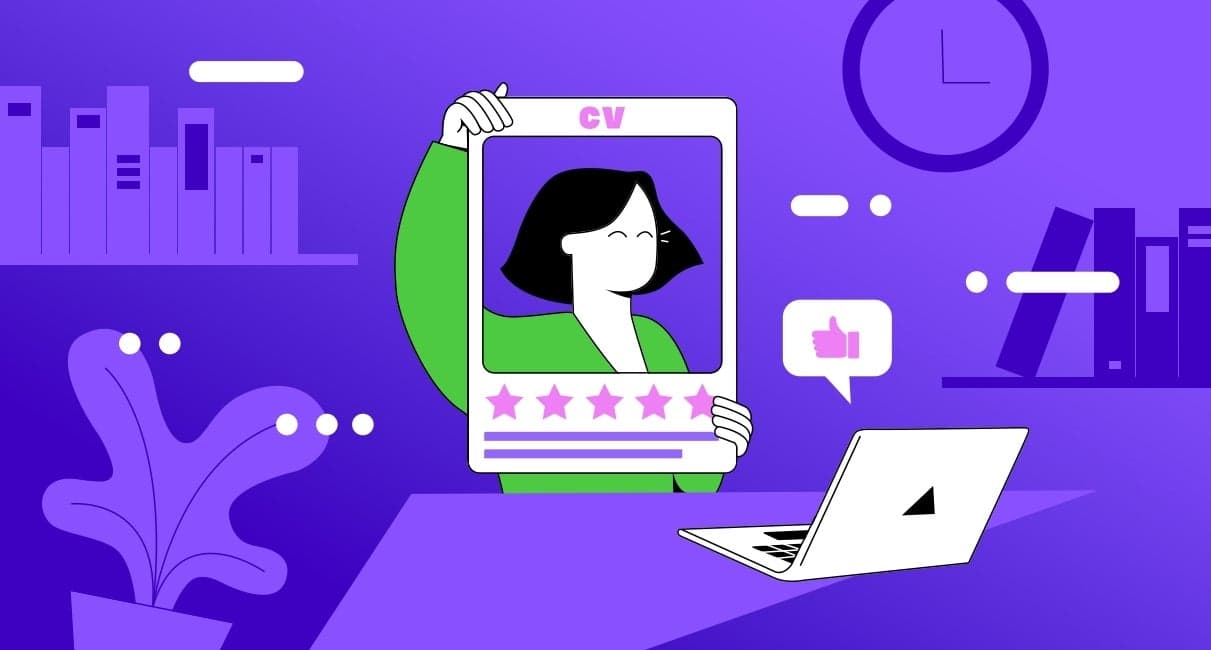How do you win over the algorithm that's going to screen your CV?
When you apply for a job, CVs aren't always selected by humans. AI tools are all the rage in companies, especially when it comes to managing and screening job applications. How do these systems work? And how should you make a CV that matches their criteria?
23 June 2025 · 1 min read

If you haven't heard of ATS, it's time to read up on it. An Applicant Tracking System (or ATS) is a software used to screen CVs and select candidates to be interviewed. Easier application tracking and automatic screening Basically, an ATS saves HR teams valuable time, and companies obviously like that, especially ones that have already racked up bad hire costs, which are on average around £40,000 (pocket change, as they say).
The result? Nice-looking CVs that you've created on Canva have more of a chance of being analysed by the algorithms of Sniper AI, Talview, Rippling, Between, Workable or Jobaffinity than ending up in someone's hands. This is the case for big companies and start-ups alike: according to Jobscan, 98.8% of Fortune Global 500 companies use an ATS – 66% of large companies generally, and 35% of small companies.
ATS: match or no match
An ATS uses the scoring or matching method to screen CVs. Its algorithm scores each job application based on criteria pre-defined by a recruiter, such as key skills required, languages spoken or the experience of the candidate in a particular area. To score the CV, the software raises key words or figures and quantifies them based on how important they are, which results in a list of compatible candidates; the ones that don't "match" the position are eliminated. It actually works a bit like the Bumble algorithm: an outdoorsy free spirit living the slow life in the country and harnessing the energy of crystals will not, in theory, be a potential match for a Battlefield-loving gamer who spends her weekends jumping up and down to techno music in Fabric (we know, it's such a shame).
And for the companies that do use one, an ATS also has the net advantage – for the majority of them at least – of being interoperable. It therefore integrates with external recruitment tools, such as LinkedIn, as well as with its internal CRM or HRIS (Human Resource Information System).
Catching the eye of AI: A How-To Guide
To create an up-to-date CV and maximise your chance of getting an interview in bigger companies, you must first update it regularly, adapt it to each job application, and adopt some AI-friendly habits:
- CV Squared
An algorithm will be better able to read a clear CV. First, start with a title that mentions the position in the advertisement. Then, structure your document into different sections. We recommend you start with a skills section before talking about your experience, education and training, and hobbies and interests. This is the time to talk about your innate organisational skills, your power of persuasion, your exceptional adaptability or emotional intelligence that everyone you meet praises you for. Algorithms find it just as hard to recognise soft skills as they do technical skills if they're not clearly stated. When it comes to your employment history, do go into detail about the companies you've worked for (industry, number of employees, turnover etc.) and use technical words related to the job you're applying for.
- Using language
Correctly using keywords will allow you to be picked up by the algorithm. If you only listen to drill and Spotify sneaks a song from West Side Story into your playlist, you're probably going to skip the track. It's the same for an ATS: the algorithm will skip the important details from your CV if it doesn't find the words the recruiter likes. Obviously you shouldn't lie, but you should opt for vocabulary that's close to the words used in the job ad as well as some figures so as to meet the logical reasoning of the algorithm. Experts advise you to use impactful headings such as "five years of experience in web design" instead of general headings such as "Employment history".
- Mastering your creative mind
When you receive a bill, you don't pay any attention to the layout or the company's new logo: all you care about is the amount! When it comes to CVs, ATS algorithms work in the same way. They aren't interested in a pretty design and don't know how to decode graphics or logos. You have to prioritise readability. You need to remember that only once you're selected by the AI will your CV be read by a recruiter. Keep it simple, but smart. Think refined, classic but ultimately functional. Yes, we're still talking about your CV, not your next pair of trainers.
- A traditional format: stick to what works
A CV in .doc or .pdf format will be easier for an ATS to read. So again, there's no need to use more original and dynamic formats as they may well affect the quality of your job application.
As you may have gathered, the secret to winning over AI software and recruiters is much the same as an exam – read the brief carefully and write your answer clearly. Save your best moves for the interview – that's where you'll really be able to make an impact.

Did this article help you?